After a meticulous and intensive search process, the American University of Armenia (AUA) announced the appointment of Dr. Bruce Boghosian as the next University President in September, 2023.
A professor in the Department of Mathematics at Tufts University with secondary appointments in the Departments of Computer Science and Physics, Dr. Boghosian previously served as President of AUA from 2010 to 2014, leading the University through rapid expansion, including the creation of undergraduate programs.
Mediamax spoke with Dr. Boghosian regarding his return to the University and Armenia, his recent research work, and AUA's vision for development, including its role in nation-building.
- Dr. Boghosian, you are assuming the leadership at the University again. During your tenure as AUA President from 2010 to 2014, you launched the bachelor’s program at AUA. How would you describe the growth of the institution since you left?
- It feels like I am returning to a very different university. It has grown dramatically since then.
When I started here in 2010, there were 400 students in master's degree programs at the University. We initiated the undergraduate program in the 2013-14 academic year, and that increased our student population to approximately 2,000 students.
We are now at about 2,300 students, and once again, we are space-limited. We are unfortunately turning away students whom we would like to accept; at this point, admission to AUA is very competitive. But that also means the quality of the students here is high, and that drives the quality of the education upward as well.
We would like to expand further in the future and are already planning for a new building that would allow us that opportunity.
- This leadership role also gave you the opportunity to return to Armenia, although I am aware that you have remained closely connected to the country all these years. Is that true?
- Yes, I never really left Armenia. I visited at every opportunity I could get during my summers and sabbatical periods. Even during the COVID-19 lockdown, when I taught all my classes remotely, I inquired with my home institution as to whether my location mattered, and they confirmed that I could teach from Armenia.
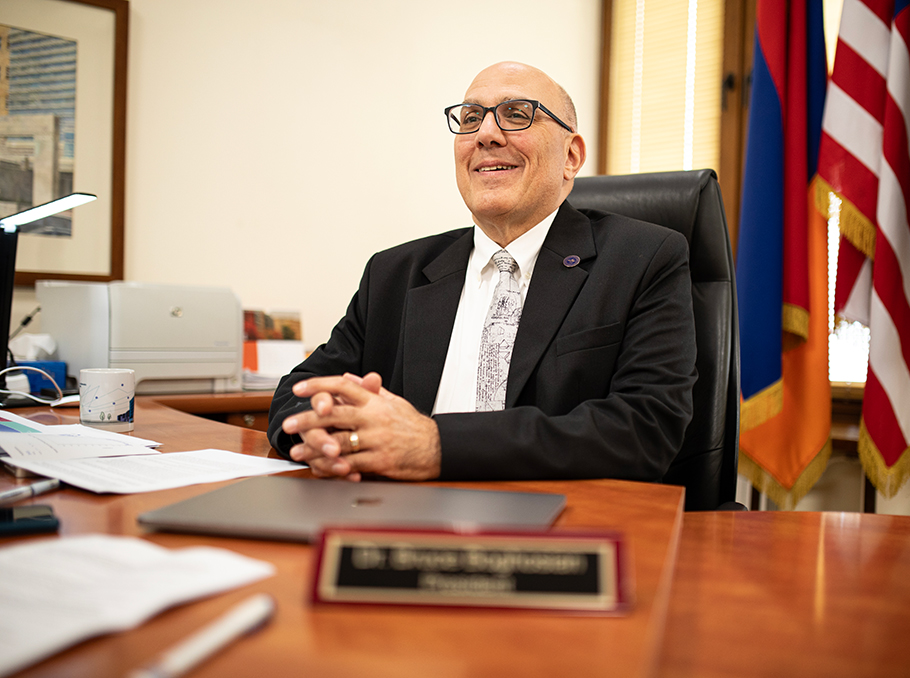 Dr. Bruce Boghosian
Dr. Bruce BoghosianPhoto: Mediamax
I spent much time during those years visiting the Central Bank's Research and Training Center in Dilijan to better understand the Armenian economy. It was a wonderful education for me, because during that same period, I was conducting research on mathematical models of macroeconomic phenomena.
- What is AUA’s relationship with the University of California, and how does this influence the education at AUA?
- The University of California was one of the founding institutions that created AUA, and it has shown a remarkable commitment to us over the last three decades of AUA's existence. We have had many members of our boards of trustees from the University of California. The Board chairperson is always from UC, and they bring invaluable academic experience to AUA. I know that if any complex problem arises, I have people I can call upon for advice on best practices. That is an indispensable resource.
We also have direct connections between some of our campuses and select programs here. For example, we have signed one Memorandum of Understanding between the UCLA Fielding School of Public Health and the AUA College of Health Sciences, and another between our Bachelor of Science in Nursing program and the UCLA Nursing School.
In addition, most of the endowment held by the American University of Armenia is invested in the University of California's endowment investment system. In other words, the same people making investment decisions for the UC endowment are making decisions for us. They are excellent at what they do, and for that reason our endowments achieve very healthy returns on investment, which is appreciated by our donors. This is another wonderful service that comes from our link with UC.
- How hard is it to find talent for a unique institution like AUA? Do you invite people from abroad? Do you hire locally?
- That is one of the major challenges of running any university. We hire both locally and internationally. When we hire locally, we do our best to find people who have had experience teaching abroad, in the West. In many cases, those are mature researchers who know how to advise students and mentor young academics.
We also hire internationally. Many are faculty who do not have an Armenian ethnic background but are nevertheless attracted to the country because of its unique culture. What is there not to love about Armenia?
As for the process, we do an international search for every faculty position. We advertise it as broadly as we can, whether we are looking for administrative or academic positions, group leaders, or center directors. This is done by a broad array of stakeholders throughout the University. It is open, collegial and transparent; in many ways, the processes here are as transparent, or even more so, than some of the finest institutions in the US.
As is the case at many Western universities, we also follow best practices to recruit distinguished faculty internationally to join AUA when the opportunity arises. Such “opportunity hires” may be appropriate when we have a chance to recruit a senior academic officer of great eminence whom we might not otherwise be able to attract, such as a distinguished scholar or a nationally renowned artist or professional.
- What mechanisms do you have in place to make all these processes transparent?
- We have two legal entities, the American University of Armenia Corporation in the United States and the American University of Armenia Foundation in Armenia, and we strive to obey the most restrictive laws of both countries. We have two Boards of Trustees, two sets of bylaws, two legal counsels — everything is doubled.
Our database of policies is open for the AUA community to add policies, comment, or suggest changes. Those comments are taken into account before the policy is made or altered.
We have a whistleblower policy that makes it possible for people to anonymously make complaints. This is a third party service that AUA uses. Our Ethics and Grievance Committee is a University body that handles confidential complaints within our community.
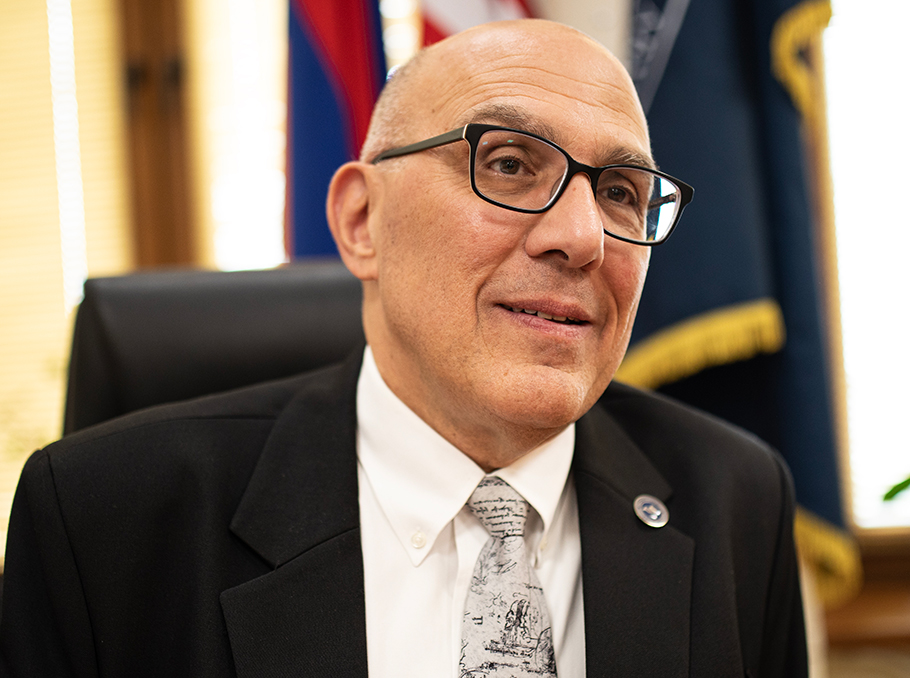 Dr. Bruce Boghosian
Dr. Bruce BoghosianPhoto: Mediamax
Our Faculty Senate is another internal AUA institution inspired by Western university governance practices. It has a number of subcommittees that handle many distributed governance functions within the University.
Another aspect of Western education I would highlight is academic freedom. The idea is that academics are largely free to conduct research that they feel is important. They are then expected to publish this research in high-quality peer-reviewed journals. Of course, they are expected to engage with the research community of the field in which they specialize, but they do have the freedom to pursue topics of their choosing without worrying about retaliation for their beliefs. These are just a selection of Western-inspired practices that we implement here.
- AUA is currently undergoing WASC (Western Association of Schools and Colleges) accreditation. Can you tell us what this means?
- All universities in California, including the University of California campuses, the University of Southern California, Stanford University, and the California State University campuses, are accredited by WASC. Through accreditation, they aim to ensure that we have a development plan and policies that we follow.
AUA initiated the accreditation process in 1998, was granted Candidate status in 2002, and reached a historic milestone when accreditation was granted effective August 2006. In March 2015, the WASC Senior College and University Commission (WSCUC) reaffirmed AUA’s accreditation for nine years, through February 2024.
Right now, we are in the final stage of re-accreditation, where we have submitted our report and virtually hosted the accreditation team. The results of this accreditation process will be announced by February 2024.
- I can see how much you apply Western experience at the University, but in the end, is AUA a local or a Western university?
- It is both. There are certainly aspects that are Western, but we strive to serve the needs of Armenia. We often say that we think globally but act locally, so we bring best practices from abroad and customize them to fit our local capacity. We do our best to listen to the Armenian government and Armenian industry when they tell us what they need.
I think that everybody who works at AUA understands that we are not only in the business of education, but also in nation-building — whether faculty or staff, we know that the purpose of this institution is to educate the next generation that is going to be working in and leading this country.
As other examples of our Armenian character, we observe all of the Armenian holidays in addition to the American ones in our academic calendar. Even when contemplating the new building’s design, we try to incorporate elements of Armenian architectural heritage.
And we make sure that all AUA’s guests visit the Temple of Garni and the Monastery of Geghard and try some Armenian cognac (laughs –ed.).
- What are the plans for the future? Where is AUA headed?
- As I previously mentioned, we are planning for a new building, which will in fact be a cluster of three buildings connected by an atrium on the other side of Triangle Park. This will give us the space that we need to increase the number of students on campus and substantially expand our laboratory space and other research area spaces, which is commensurate with our desire to grow our research capacity. Once again, we anticipate growth in our future.
We currently offer 19 degree programs: eleven graduate and eight undergraduate. Those numbers will almost surely increase, and we will be looking to expand especially in the STEM fields, in the social sciences, in the arts and humanities, and in business and economics. We hope that some of these will be Ph.D. programs.
The strategic plan will be conducted with input from all stakeholders, giving them the opportunity to comment on our plans at various points along the process.
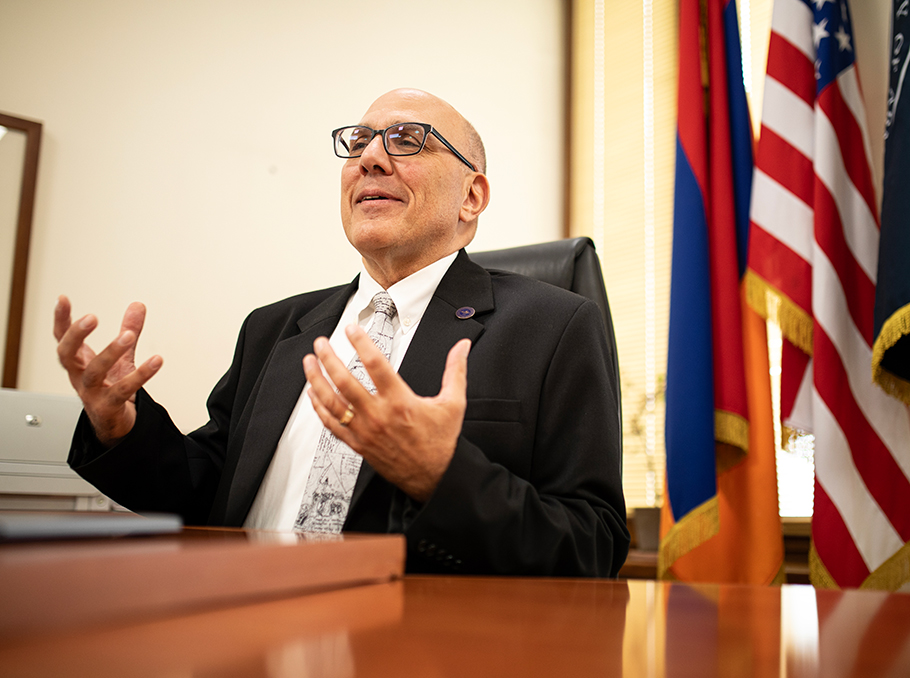 Dr. Bruce Boghosian
Dr. Bruce BoghosianPhoto: Mediamax
- The availability of necessary financial resources is crucial for the successful development of an educational institution. How does AUA deal with this?
- AUA's general business plan is to raise endowment funds from donors, mostly in the United States, to educate students in Armenia. The endowment is the source of our funds and scholarships.
Thanks to the efforts of my predecessors, our endowment now is five times bigger than it was when I started here in 2010. That is really due to our donors' generosity, and their trust and belief in our mission, which we have worked hard to earn over the years.
Of particular note are two of the latest large donations we have received: $20 million from the Avedisian Family Foundation, and $9 million from the Akian Family Foundation. Both of these are allocated for the construction of the new building.
The part of our revenues that is not spent is kept in investments held and stewarded by the University of California.
It is important to mention that AUA has a rigorous financial aid system in place. Over half of our student body receives some kind of aid from the University: We are both a full-need and need-blind institution, meaning that we admit students based on the quality of their application without regard to how much financial aid they will need. Only after we decide who is accepted do we open the financial aid applications and see how much they will need, using our own means testing. We then commit to give them that full amount. We also offer merit-based and international scholarships.
- Many people have started to question the necessity of formal education. The availability of numerous online courses and the rapid obsolescence of information in this fast-changing world have contributed to this debate. What is your response to this?
- I have heard this idea of not bothering to attend university. They always point to the examples of Steve Jobs, Mark Zuckerberg, and Bill Gates, all of whom dropped out of universities, and assume that being a dropout makes you a billionaire. It does not quite work like that (laughs –ed.).
At universities, we set out to produce classically educated people, and I mean that in the broadest, most positive sense. Our goal is to produce members of society that have already pondered all the great ideas that could be brought to bear on a particular subject. If somebody is arguing a point in philosophy or political science, it is because they have already have read Plato, Socrates, John Locke, Rousseau — they know their works well, including the pros and cons of every point. They can argue a point from six directions, all of which are contradictory to each other, and they can keep those contradictory ideas in mind as they argue, because nothing is neat and simple in the real world, nothing has a definite answer. We want thoughtful people who are capable of this kind of complex reasoning.
I understand the counterargument, which is that the next generation will type questions to ChatGPT and obtain all the answers they need. Yes, such tools do bring these concepts to people's fingertips more easily, but where is the understanding?
I have typed graduate-level mathematics problems into ChatGPT, and the first time, I was surprised at how good the answer was. But keep doing it, and you will find that sometimes it makes mistakes, and it even tries to bluff its way through the mistakes just as a student who had not studied sufficiently might try to do.
I am not criticizing ChatGPT; it is a useful tool. Maybe it will improve over time, maybe it will even become smarter than humans, which is what they are telling us. It is like this dystopian science-fiction novel where there is no more learning: people just eat khorovats all day, and in the middle of the town, there is this black box to which people can go to ask all their questions. It gives the answers, but what have you understood?
Let’s take physics as an example. If you read Newtonian physics, it changes your understanding of the universe. You read Einsteinian physics, and you gain an even weirder understanding of the universe. And quantum mechanics is the weirdest of all, because it questions the nature of fundamental reality. You have to go through those emotional leaps in understanding before you truly comprehend what humanity knows about physics; it is not just about getting answers.
- Dr. Boghosian, could you please share some key highlights of your career journey and how you arrived at your current position?
- I was always interested in mathematics and physics. I have worked in national laboratories, private industry, and universities in the U.S.
In national laboratories, I worked on controlled nuclear fusion, which is now becoming a big thing again. That was a fascinating experience, thinking about how you would take a process like nuclear fusion and scale it up into a power reactor that could generate electricity. After I received my Ph.D., I moved to a startup in the Kendall Square area around MIT. We were the first company to create parallel computers. Nowadays, they have become ubiquitous, but it was exciting to be part of this startup back then.
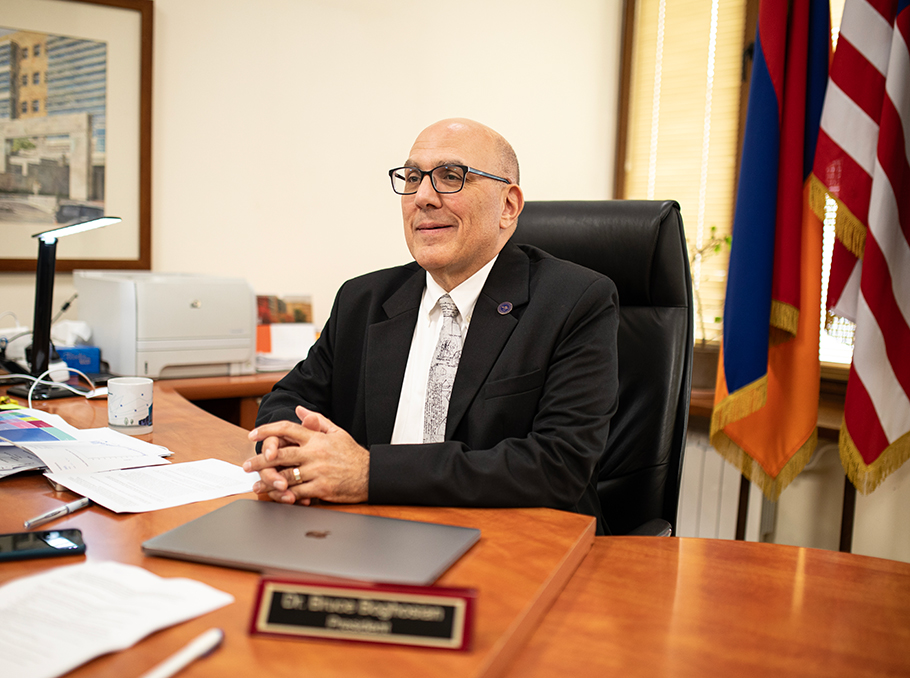 Dr. Bruce Boghosian
Dr. Bruce BoghosianPhoto: Mediamax
Since 2000, I have worked at Tufts University near Boston doing computational mathematical modeling, mostly in the area of fluid dynamics. I was interested in how the motion of individual molecules in a fluid gives rise to something that has all of the complex behavior you see in turbulent fluid flow. I also served as chair of Mathematics at Tufts from 2006 to 2010. That was when I applied for my first term as president at AUA. Both at AUA and elsewhere in Armenia, I met students doing fascinating research, which is why I kept in touch with Armenia after leaving AUA.
I have already talked about my collaboration with the Central Bank. During that period, I was still interested in how the interaction of unsophisticated things can create complexity, except I replaced the molecules with people, and instead of colliding with one another and exchanging energy, they transacted with one another and exchanged wealth. Suddenly, you have a model of wealth distribution that uses similar mathematics as that used in fluid dynamics. Our model showed better results than any known economic model in predicting the shape of wealth distributions. Since then, I have been fascinated by the application of physics and mathematical modeling to economics and the social sciences. Now that I am back in administration, I hope this work will continue, even if I am not actively involved anymore.
- I can tell that you have been quite immersed in your research work, yet you have returned to the University. Why?
- I truly have a genuine affection for both the country and the institution. I always felt that there is great potential at this University — indeed, there is great potential in this country. The fact that I wanted to live here factored into my thinking. I guess the identity drew me in at the end.
I am the second generation of Armenian Genocide survivors. Although we were part of the Armenian community, there were no Armenian schools back then in Massachusetts, where I grew up. I remember my grandparents, and I knew they were all affected by the Genocide in one way or another. But then, life takes you in different directions: I went off to college, I started building my career.
There are some second-generation Americans of various ethnicities who may know their national dishes and raise glasses to make toasts, but they have no connection with their homeland and do not know their mother tongue. This could have been the case for me were it not for the fact that the Lebanese Civil War and the Iranian Revolution broke out in the 1970s, and suddenly there were many people coming to the United States who knew their heritage and language much better than I. They became my friends in college, and I learned so much from them. It was my association with the community there that built up my interests in Armenian history, politics, culture and language.
I first came to Armenia in 2008. I can even remember my first trip to the Temple of Garni and the Monastery of Geghard (laughs-ed.). Now, in many ways, I feel at home here at least as much as I do in the U.S., even though my spoken Armenian is still a work in progress.
I was here throughout the whole 2020 war, I can vividly remember my emotions during my visit to Yerablur to pay my respects at that time, and…I felt that this is the place I want to be and do what I can to help.
Gaiane Yenokian
Photos by Emin Aristakesyan








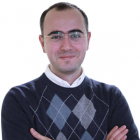
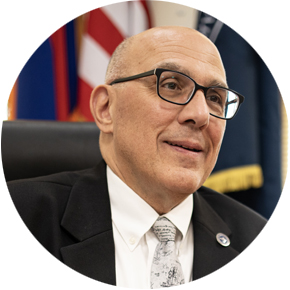

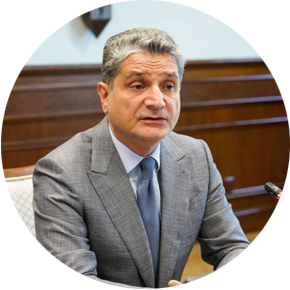
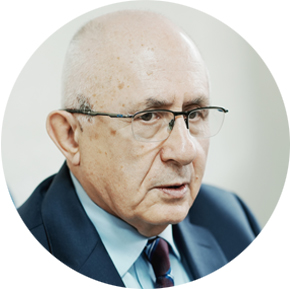
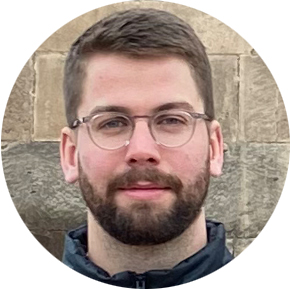







Comments
Dear visitors, You can place your opinion on the material using your Facebook account. Please, be polite and follow our simple rules: you are not allowed to make off - topic comments, place advertisements, use abusive and filthy language. The editorial staff reserves the right to moderate and delete comments in case of breach of the rules.